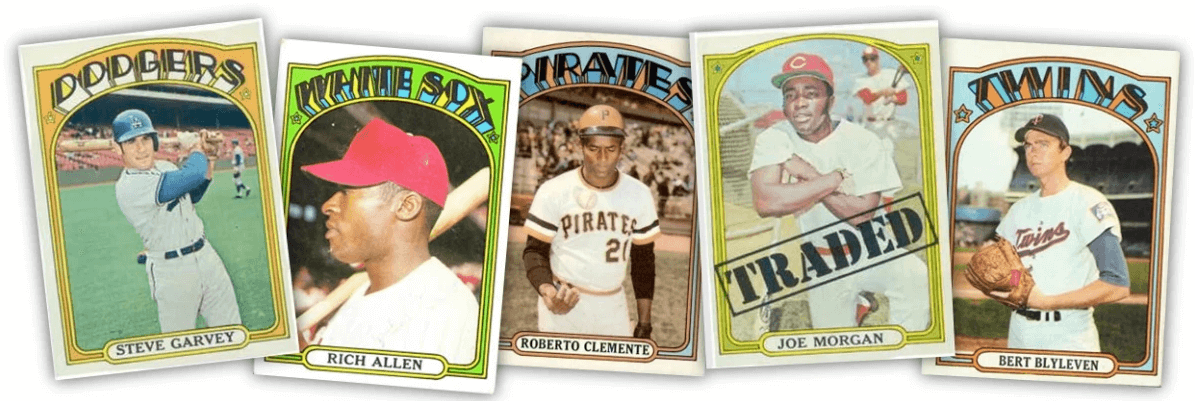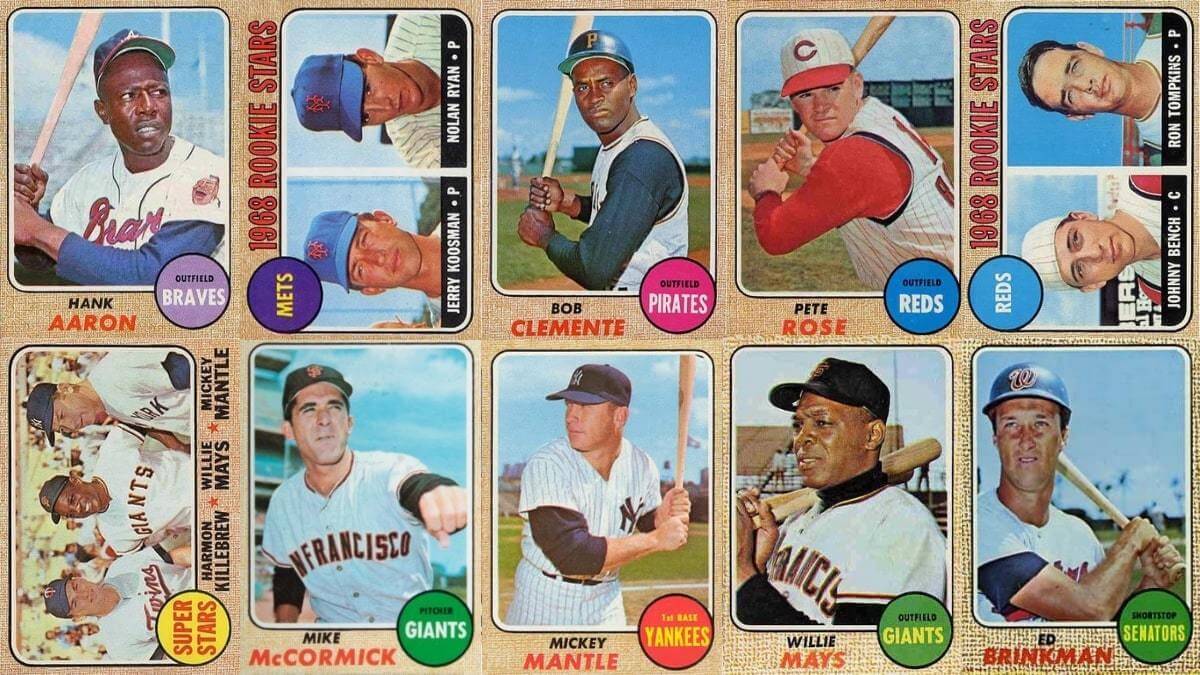Baseball cards have been an integral part of the game and its culture for well over a century. What began as a simple marketing gimmick has since transformed into a massive industry with devoted collectors around the globe. Whether trying to complete the entire set for a given year or chasing the ultra-rare cards of legends like Babe Ruth and Mickey Mantle, baseball card collecting provides a unique way for fans to connect with the storied history of America’s national pastime. But when and how did it all begin? The origins of baseball cards offer an intriguing look at the early development of professional sports marketing.
Origins of Baseball Cards

Baseball originated as a bat and ball game in the early 19th century, likely based on the English games of rounders and cricket. While baseball was played in various forms in the 1830s and 1840s, it did not become widely popular as an organized sport until the late 1860s. Several developments helped boost baseball’s popularity in the late 19th century:
-
The establishment of the first professional baseball league, the National Association of Base Ball Players, in 1871. This helped legitimize baseball as a professional sport.
-
Increased organization and standardization of the rules and structure of the game like overhand pitching, 9 player teams, 9 inning games. This helped make the sport more uniform and enjoyable to watch.
-
The start of the National League of Professional Base Ball Clubs in 1876, replacing the National Association. The National League helped stabilize professional baseball after scandals in the previous league.
-
The spreading of the sport across the country. Advances in transportation like railroads helped baseball become a national game by the 1880s and 1890s.
-
The rise of star players like Cap Anson that helped popularize teams. Fans started following favorite players and teams more closely.
-
Improvements to ballparks and fan amenities that made attending games more appealing. Ballparks evolved from simple wooden structures to venues with more seating and comforts.
With baseball cementing itself as the national pastime in the late 1800s, the stage was set for the development of baseball cards to capitalize on the sport’s growing popularity.
The Precursors: Trade Cards
Trade cards originated as a form of advertising in the late 1800s. Companies would include collectible cards in packages of their products to promote their brand. These Victorian trade cards featured beautiful artwork and were highly collectible. As explained in A Brief History of Trade Cards, trade cards “were produced in tremendous volume during the latter decades of the 19th century.”
The cards allowed companies to advertise their products in an engaging way. People eagerly collected the cards, fueling demand for the advertised products in order to acquire more cards. Trade cards paved the way for baseball cards by demonstrating the power of collectible cards for marketing and promotion.
The First Baseball Cards

The origin of baseball cards as we know them today traces back to the late 1800s, when tobacco companies started printing cards and slipping them into cigarette packs as a promotion. Baseball was becoming popular at the time, so the tobacco companies saw an opportunity to include baseball players on their collectible cards.
The first major set of baseball cards was produced in 1887 by Old Judge Cigarettes. The Old Judge set featured over 500 players from the National League and American Association. While not technically the first baseball cards ever made, this set by Old Judge is considered the first major, mass-produced set of baseball cards to be distributed nationally.
Other tobacco companies such as Goodwin and Dukes followed suit, printing their own sets of baseball cards and distributing them with cigarettes. This helped spread the cards throughout the country while also promoting their tobacco products. Having a collectible card inside was an incentive for customers to keep buying their brand.
So while baseball cards today are more often found in packs of bubble gum, their origin lies in the marketing gimmicks of tobacco companies back in late 1800s. The popularity of baseball made it a natural subject for these early collectors’ cards, planting the seeds for the pastime of collecting and trading baseball cards that still exists today.
Regional Sets Emerge
In the early 1900s, regional tobacco brands began printing their own baseball card sets to include in packages of cigarettes or tobacco products. These sets became very popular at the time, as they allowed fans in specific parts of the country to collect cards of players from their local teams.
Some of the key regional sets produced during this era include:
-
T206 (1909-1911): Issued by the American Tobacco Company, the T206 set featured over 500 cards and is considered one of the most popular and valuable vintage baseball card sets today. The cards featured past and present players from a variety of teams.
-
T205 (1911): Printed by the Hassan Tobacco Company, this set included cards for 200 players from the American, National, Eastern, and Southern leagues. The cards had gold borders and artistic lithography.
-
E90-1 (1909-11): Marketed as the “American Caramel Company” set, these cards were distributed primarily on the east coast. The cards had a distinctive wreath design on the front.
-
T212 (1912): Produced by the Obak Tobacco Company, this set featured over 150 cards depicting college and minor league baseball players and teams. The cards had a simple red and blue checkered border design.
-
D354 (1911-14): Printed by the W.S. Kimball Company, this set included cards for over 200 minor league players on the east coast. The cards featured black and white player portraits surrounded by an ornate scrollwork frame.
These vintage regional sets gave fans in different parts of the country a chance to collect cards of their favorite local stars and teams during the early 20th century. The scarcity and condition-sensitivity of these cards make them highly sought-after by collectors today.
Gum Companies Take Over
In the early 1900s, candy and gum companies like W.R. Kellogg’s, Breisch-Williams, and American Caramel Company started producing cards to help market and sell their products. Baseball cards were inserted into candy and gum packs as premiums and incentives for customers to buy their products.
While tobacco companies like Goodwin and Sons had dominated the baseball card market in the late 1800s, gum and candy companies surpassed them in popularity in the early 20th century. The colorful cards with baseball players’ images helped sell the products they were packaged with.
In particular, the American Caramel Company and its various brands like Play Ball and Sporting Life generated great interest by featuring not only major league players but minor league and college athletes. The designs were brighter and more attractive than older cigarette cards.
As more children and families purchased gum and candy, the baseball cards inside these packs became a hugely successful marketing technique. Culver’s Candy, Hubenthal Brothers, Colgan’s Chips and Turf Cigarettes were other notable gum and candy brands that flourished during this era by packaging baseball cards with their products.
The Golden Age

After World War II ended, baseball card collecting saw a revival and entered a golden age. Major gum companies like Topps and Bowman emerged during this era and began producing popular and innovative baseball card sets.
Topps’ first major set debuted in 1952 featuring 407 cards including Mickey Mantle’s iconic rookie card. The set ushered in many of Topps’ trademarks like the wood-grain bordered design. From 1952-1955, Topps and Bowman were engaged in intense competition over player contracts and dominated the baseball card landscape.
During the 1950s and 1960s, Topps continued releasing landmark sets featuring bold designs and enhanced photography that appealed to kids and collectors. Notable releases include 1957’s blue-toned set, 1962’s wood-bordered cards, and 1968’s 3D design. The hobby exploded in popularity during this prosperous postwar era as cards were packaged with gum and became engrained in American pop culture.
The Modern Era
Baseball cards saw major shifts and innovation starting in the 1960s. Topps gained a monopoly on cards after buying out Bowman in 1956, but this spurred them to take more design risks. They introduced the first color photos in 1962 and continued experimenting with photos, textures, foil, and other design elements into the 2000s.
Since the 1980s, rookie cards of future superstars have become a major focus for collectors and investors. Key modern rookie cards include Mike Trout in 2009 Bowman and Kris Bryant in 2013 Bowman Draft. Inserts, parallels, autographs, relic cards, and graded cards also emerged as ways to add value.
The hobby saw a plunge starting in the 1990s as overproduction crashed the market. But innovation continued, with new manufacturers entering like Upper Deck in 1989. The internet enabled direct sales between collectors along with new information access. Cards remain popular today, though production scaled back to avoid another 90s-like collapse.
Decline and Resurgence
The popularity of baseball cards declined significantly in the 1990s. Several factors contributed to this decline, including overproduction and the MLB strike of 1994-1995. Card companies like Topps, Donruss, and Fleer flooded the market, printing far more cards than collectors could absorb. The saturation of cards made them less valuable and less appealing to collectors. At the same time, the baseball strike turned off many fans, further reducing interest in cards.
While the baseball card market crashed in the 90s, the early 2000s saw signs of a comeback. Vintage cards from the “golden age” of the 1950s maintained value and newer rare and autographed cards became popular among collectors. The internet provided new ways for collectors to connect, trade, and sell cards. By the late 2000s, the baseball card market was steadily rebounding . While not reaching the heights of the late 80s and early 90s boom, baseball cards recovered as an enduring collectible and American pastime.
Conclusion
Baseball cards have come a long way since their origins in the late 1800s. What started as a novelty item distributed with tobacco products grew into a massive collecting industry by the mid 20th century. Companies like Topps turned baseball cards into popular cultural icons that were eagerly collected and traded by generations of fans (Traders of the lost art: An inside look at the Topps process).
Though the hobby declined in the 1990s and early 2000s, baseball cards remain an important part of baseball history and culture. Vintage cards from the “golden age” are worth millions today. The cards chronicle not just baseball’s greatest players and moments, but also the history of printing, advertising, and consumer culture in America. For fans, collecting cards represents a love of the game, fond memories, and getting to re-live baseball history through iconic cards. Baseball cards have become a part of the fabric of American culture, maintaining a strong nostalgic appeal and connection to the pastime. Their rich history is one filled with innovation, drama, larger-than-life stars, and the passion of fans.








